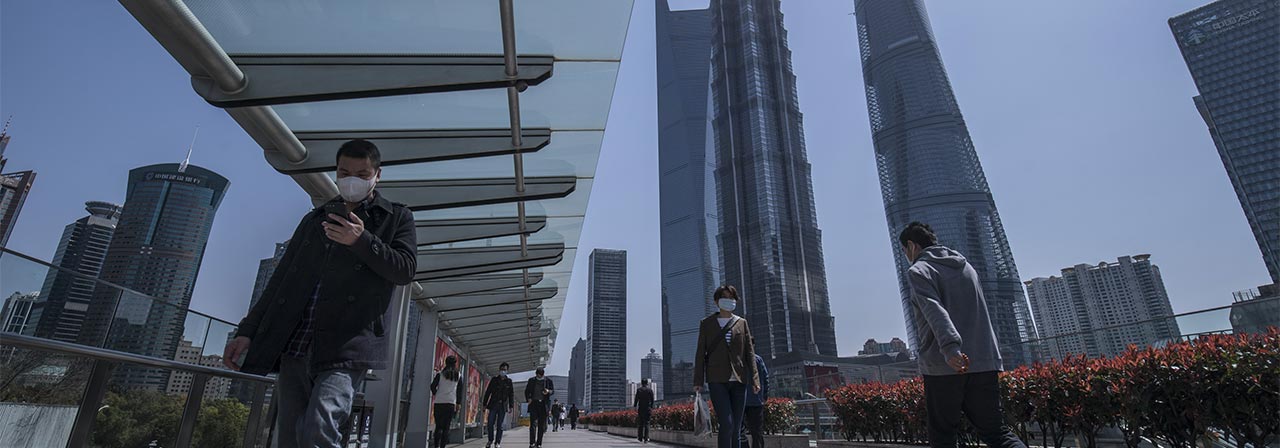PODCAST: Why real estate is looking to China for tips on air quality
Asia learned the hard way on how to address “sick-building syndrome” so now the rest of the world doesn’t have to
Property managers looking for ways to improve indoor air quality should take lessons from China to increase their chances of long-term success, experts say.
The country, having battled toxic air for two decades during rapid industrial growth, has developed a blueprint for purifying indoor air.
“I often say that in Asia this is our fifth health crisis, with the first one starting in 2003, and so you learn a lot along the way,” says Raefer Wallis, who, from an office in Shanghai, developed the RESET standard to monitor building health at his company GIGA.
“Consequently, Asia is pretty advanced when it comes to indoor air quality,” he says. “Yet what we’re seeing is the rest of the world trying to compress 17 years of learning into a few months. They’re making the same mistakes we made in Asia all those years ago.”
Awareness of indoor air quality, along with health and wellbeing within buildings more broadly, has soared during the global pandemic. Real estate agents are reporting businesses looking for new premises enquiring about indoor air quality only after price, location and size. One business was prompted to search for a new office due to the poor air quality at its existing address.
Studies are also proving the returns on investment in health and wellbeing enhancements. A Dutch experiment comparing one building optimised for health and wellbeing, with another that wasn’t, found that after four years there was a reduction in worker absenteeism equating to US$33,046 of annual savings. Employees were also 42 percent less likely to report headaches, nausea or fatigue –symptoms of so-called sick-building syndrome.
One key for better air is to filter it at a hyper-local level, rather than only through a central filtration system that can draw infected air across large spaces before cleaning it. Central filtration is typical in the Western world, which has responded poorly to localized surges in virus particles, says Wallis, a recent guest on JLL’s Perspectives podcast.
However, when it comes to cleansing the air, businesses must be wary of taking shortcuts. Wallis attests to managers spending money on portable filtration, which invariably fails within weeks because they get pushed under desks, unplugged to charge phones, laptops or run vacuum cleaners.
“Portables are a good emergency solution, but my advice is to invest in the long-term: this problem isn’t going away. If you’re not spending money on properly integrating solutions into infrastructure, experience shows that the money will likely go to waste,” Wallis says.
“In Asia, portables were modified and installed on ceilings, automated and equipped with small ducts. As a result, effectiveness went up threefold for a similar expense. They never get unplugged for a laptop, they automatically turn on and off based on sensor readings and the air flow doesn’t get compromised by furniture at floor level.”
Start with the data
Property health and sustainability specialists are uncompromising about the need to embed data into building optimisation plans. Reliable data defines the problem to be fixed, as well as tracks ongoing efforts.
Plus, at a time when employees and occupiers are scrutinising health and wellbeing strategies like never before, a lack of data can erode trust between stakeholders.
This was evident early in China’s air quality crisis, when parents were sending their children to school with air quality monitors in their backpacks and monitoring remotely to ensure teachers and schools were adequately protecting their kids.
Wearable technology these days is holding real estate managers to account, says Matthew Clifford, head of energy and sustainability services in Asia Pacific, for JLL.
Clifford recalls a business manager approaching him for advice because an employee was coming into the office with a personal air quality monitor and demonstrating that the air quality was poor.
“They had no air quality monitors embedded into their infrastructure because of the cost, and as a result, not only had they lost control of the air quality problem in their office, but they’d also lost control of the narrative,” Clifford says. “Whether the reading was accurate or not remains to be seen, but the worker’s thinking ‘my employer doesn’t care about my wellbeing, and so off I go down the road to work for another organisation.”
A learning curve
The real estate sector is still getting to grips with how all-encompassing health and wellbeing in the built environment is. Especially, for example, how mental health can be affected by the physical attributes and experiences of a building as much as physical health.
However, the ‘war for talent’ is a concept cities and employers have become more attuned to, and since it feeds into the health and wellness narrative, things are quickly changing, says Andrew Cole, general manager of sustainability in investment management at Lendlease.
“There is no question that wellness, in terms of corporate culture programs, systems, opportunities and flexibility, are a key part of the attraction and retention strategy for workplaces,” Cole says. However, he adds that “responsibilities extend across the real estate value chain, with tenants, property managers and landlords having to work together to deliver.”
